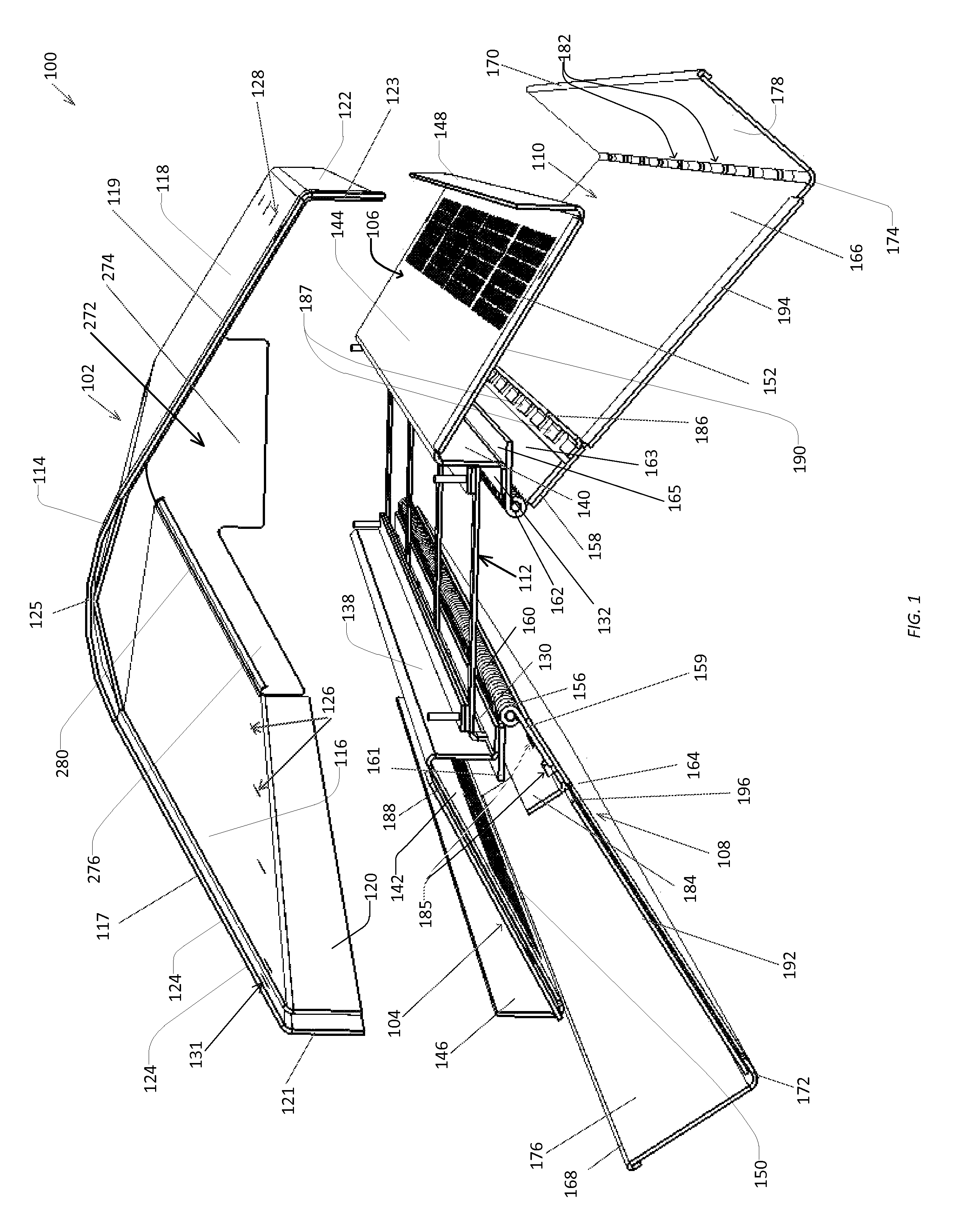Roof ridge ventilation system
a ventilation system and roof ridge technology, applied in ventilation systems, lighting and heating apparatus, heating types, etc., can solve the problems of not revealing the use of ridge vent systems, insufficient for today's larger structures with greater ventilation and cooling needs, and inability to operate easily, reduce the effect of heat transfer, and facilitate operation
- Summary
- Abstract
- Description
- Claims
- Application Information
AI Technical Summary
Benefits of technology
Problems solved by technology
Method used
Image
Examples
Embodiment Construction
[0077]Referring to FIGS. 7a-c, roofs 10 are shown, roof 10 of FIG. 7a covering an attic space 22, roof 10 of FIG. 7b covering a vaulted or cathedral ceiling (hereafter referred to as vaulted ceiling) and roof 10 of FIG. 7c covering an attic space 22 but in the less common situation where there is encountered both attic floor insulation 25 as well as roof insulation 24 so that there are vent chutes 226 as shown.
[0078]Each roof 10 is composed of structural members, such as rafters 12 joined together so as to form a peak or ridge portion 217 shown in the figures having a beam 215. On either side of the ridge 217 there are typically fastened sheets of plywood 16 serving as a base or solid sheath 16 for installing, as by nailing, roofing material, such as shingles, shakes and the like (all represented by 18).
[0079]As shown in FIGS. 7b and 7c, on the underside of the typically plywood solid sheath 16, there is defined between the rafters 12 an air gap 20, or in actuality a plurality of ai...
PUM
| Property | Measurement | Unit |
|---|---|---|
| length | aaaaa | aaaaa |
| length | aaaaa | aaaaa |
| angle | aaaaa | aaaaa |
Abstract
Description
Claims
Application Information
 Login to View More
Login to View More - R&D
- Intellectual Property
- Life Sciences
- Materials
- Tech Scout
- Unparalleled Data Quality
- Higher Quality Content
- 60% Fewer Hallucinations
Browse by: Latest US Patents, China's latest patents, Technical Efficacy Thesaurus, Application Domain, Technology Topic, Popular Technical Reports.
© 2025 PatSnap. All rights reserved.Legal|Privacy policy|Modern Slavery Act Transparency Statement|Sitemap|About US| Contact US: help@patsnap.com



